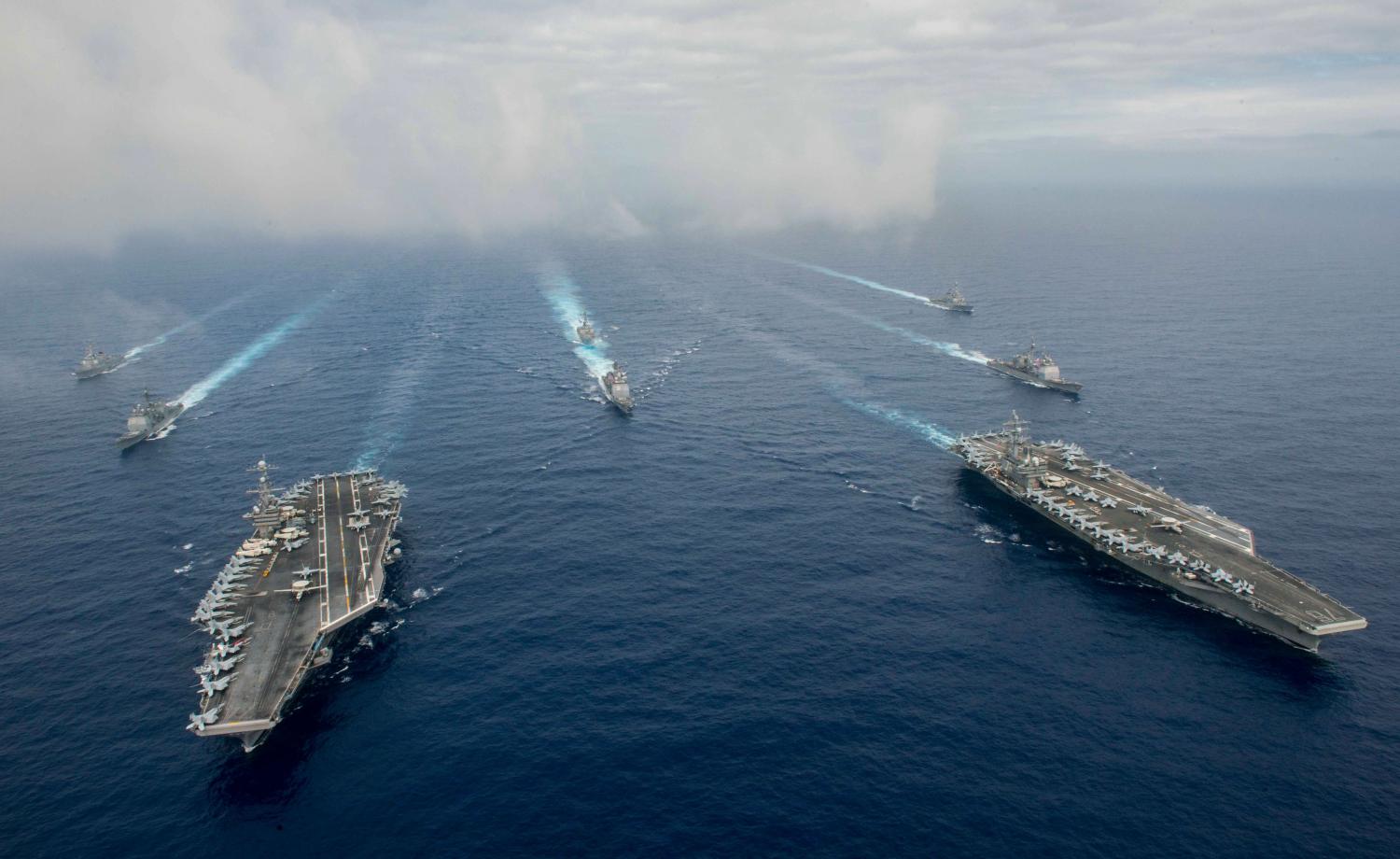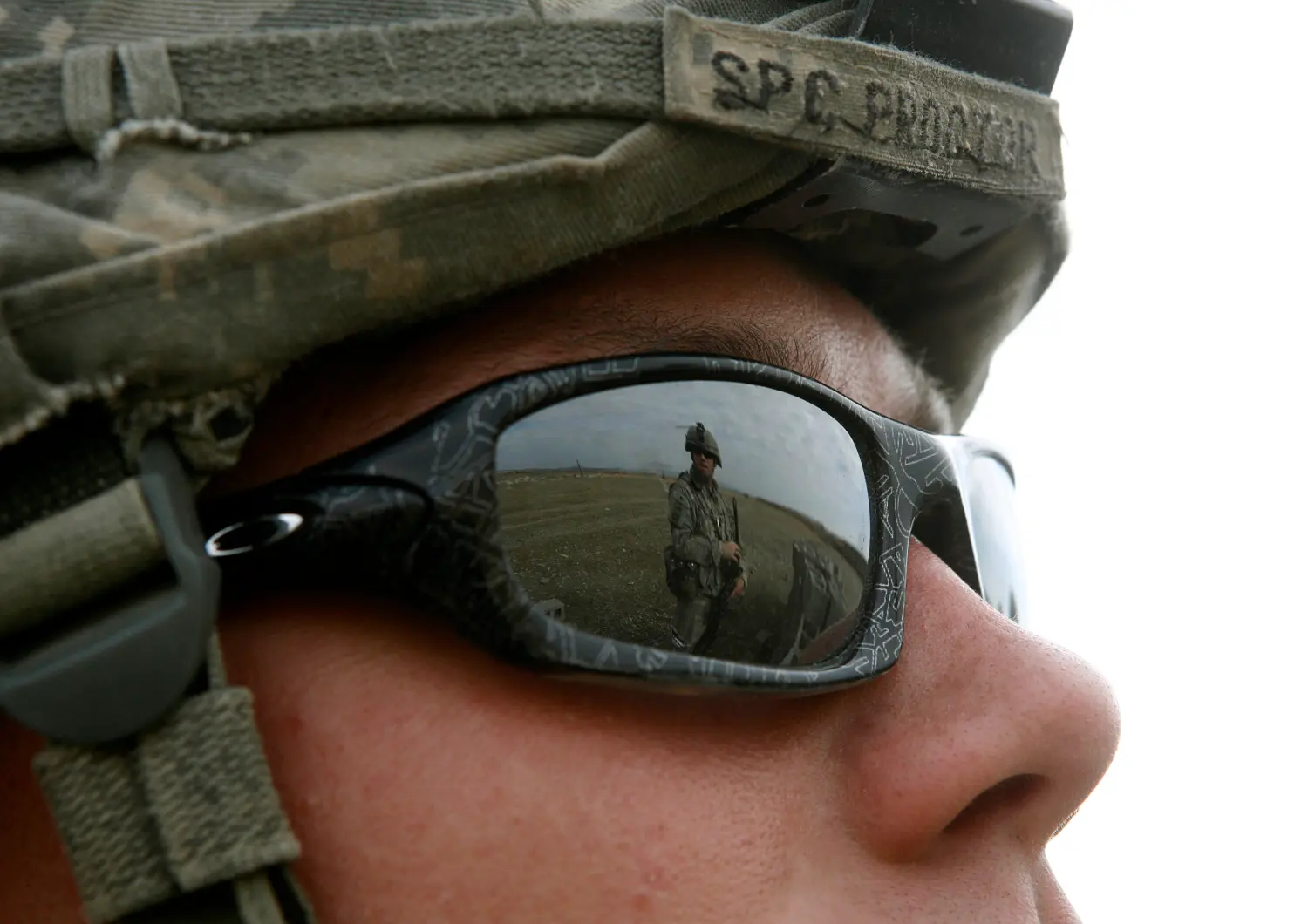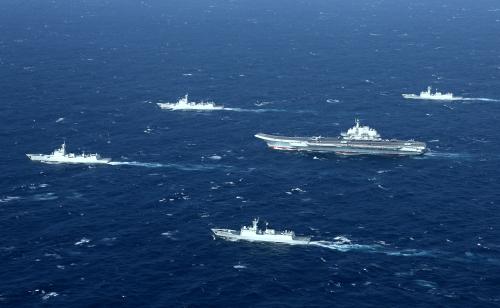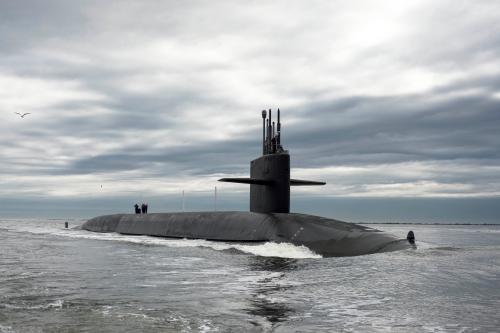The following brief is part of Brookings Big Ideas for America—an institution-wide initiative in which Brookings scholars have identified the biggest issues facing the country and provide ideas for how to address them. This was originally published in Foreign Affairs. (Updated January 24, 2017)
 Most major elements of U.S. defense policy are on reasonably solid ground, despite innumerable squabbles among experts over many of the details. Throughout the post–Cold War era, some variant of a two-war planning framework (with caveats) has enjoyed bipartisan support and should continue to do so for many years to come. Forward presence and engagement in East Asia, Europe, and the Middle East remain compelling pillars of U.S. national security strategy. Robust research-and-development programs continue to be supported, as does an unparalleled intelligence community. The Defense Department’s procurement budget—the first victim of budgetary austerity in the 1990s and in the early years of this century—is once again relatively healthy. Pentagon leaders are spurring innovation, and the men and women of today’s armed forces display high standards of professionalism, expertise, and experience.
Most major elements of U.S. defense policy are on reasonably solid ground, despite innumerable squabbles among experts over many of the details. Throughout the post–Cold War era, some variant of a two-war planning framework (with caveats) has enjoyed bipartisan support and should continue to do so for many years to come. Forward presence and engagement in East Asia, Europe, and the Middle East remain compelling pillars of U.S. national security strategy. Robust research-and-development programs continue to be supported, as does an unparalleled intelligence community. The Defense Department’s procurement budget—the first victim of budgetary austerity in the 1990s and in the early years of this century—is once again relatively healthy. Pentagon leaders are spurring innovation, and the men and women of today’s armed forces display high standards of professionalism, expertise, and experience.
Yet there are also areas of concern. Excess base capacity remains a problem. The navy’s fleet and the army are too small, and current budget trajectories imply further cuts rather than increases. And the scale of some hugely expensive weapons programs in the pipeline or on the drawing boards, such as the F-35 fighter jet and some new nuclear weapons, needs to be reassessed. The challenge for the next president will thus be how to build on the strengths, address the problems, and chart a course for continuing to maintain U.S. military dominance in a strategic environment that never stops evolving.
CHANGE VS. MORE OF THE SAME
The national interests that the U.S. military needs to advance remain constant: protecting the homeland; safeguarding U.S. citizens at home and abroad; and ensuring the security of U.S. allies, the global economy, and international order more generally. These days, threats to those interests come from five sources: great powers (such as China and Russia), extremist nonstate actors (such as al Qaeda; the Islamic State, or ISIS; and the Taliban), rogue states (such as Iran and North Korea), pandemics and environmental turbulence, and developments in advanced technology that could increase U.S. vulnerabilities (especially those related to cyberspace, space, and weapons of mass destruction).
Fortunately, the United States has many resources to draw on as it prepares for these threats, even beyond its military forces. The country’s high-tech and innovative sectors are the best in the world. It has solid economic fundamentals, including a gradually growing population base, the world’s best universities, and a large market at the center of global finance and commerce. And most important of all, the United States leads a globe-spanning system of alliances and partnerships that includes some 60 countries, collectively accounting for two-thirds of global economic output and military capacity.
A serious defense policy, however, needs to take into account the way war itself is changing. True military revolutions are relatively rare, as even major changes usually occur gradually, over decades. But there is clearly one such revolution now in process, perhaps halfway along: in airpower, particularly in the effects of precision ordnance combined with the vast increase of intelligence, surveillance, and reconnaissance (ISR) systems on the contemporary battlefield.
Harbingers of this revolution were apparent as far back as 1982, in the effectiveness of the French-made Exocet missiles used by the Argentinian military against British warships during the Falklands War. Around the same time, NATO put forward the concept of AirLand Battle, which envisioned using new types of advanced munitions to precisely strike critical targets behind the frontlines in the event of a conflict with the Warsaw Pact. (Hearkening back to the “first offset”—NATO’s reliance on nuclear weapons to counter its foes’ large land armies—some called this the “second offset,” relying on the high-tech quality of its conventional forces to counter its foes’ quantitative superiority.)
A serious defense policy, however, needs to take into account the way war itself is changing. True military revolutions are relatively rare, as even major changes usually occur gradually, over decades.
The public began to take notice of these developments during the Gulf War in 1990–91, as laser-guided bombing played as well on television as it did on the battlefield. GPS-guided bombs arrived a few years later, and they were eventually followed by armed drones. All these American weapons can now be employed in vastly greater quantities through “sensor-shooter loops” that take advantage of remarkable advances in reconnaissance systems, such as the “unblinking eye” of many dozens of drones and satellite-based communications that share targeting, video, and critical data across the military in real time.
Precision-guided bombs accounted for about ten percent of the ordnance used in the Gulf War. In recent conflicts, they have accounted for about 90 percent, with a dramatic impact on the course of battle. As a result, Pentagon officials now talk of a “third offset”—the hope, championed by Secretary of Defense Ashton Carter and Deputy Secretary of Defense Robert Work, among others, that it will be possible to rely on modern-day ISR and precision assets to counter, say, larger Chinese missile, aircraft, ship, and submarine forces in the waters of the western Pacific.
For all this progress, however, there are limits to what standoff warfare and advanced technology can achieve by themselves. To make precision bombing effective, for example, targets need to be located accurately—something that can be difficult if those targets are in cities, forests, or jungles, or are concealed or underground. Moreover, advanced sensor and communications networks may prove fragile when fighting technologically sophisticated adversaries.
Land warfare also remains complex, particularly when fighting in cities or against an adversary trying to hide or disguise what is being done (such as Russia’s seizure of Crimea in 2014 using “little green men”—mysterious soldiers in unmarked uniforms). Future war fighting could be complicated by the introduction of chemical, electromagnetic-pulse, or even nuclear weapons or take place in a war zone affected by pandemic infectious disease. And it is not hard to conjure up scenarios in which U.S. forces would be responsible for helping restore order in a chaotic environment marked by the breakdown of complex systems that usually provide essential services to millions of people.
Given all of this, how should the next administration handle defense policy? By building on existing policies and concentrating on preparing the army for multiple missions, continuing the navy’s rebalance of attention to the Pacific, countering China and Russia, and maintaining adequate resources to support a robust force.
PREPARE THE ARMY FOR ANYTHING
After long, difficult wars in Afghanistan and Iraq, some critics have argued that the entire notion of attempting to prepare U.S. ground forces for complex missions beyond conventional combat is a fruitless or even counterproductive exercise. Reprising the army’s attitude in the wake of the Vietnam War, when it eschewed counterinsurgency and focused instead on high-end maneuver warfare and the NATO–Warsaw Pact face-off, they favor developing a force with a more limited orientation. The Obama administration’s 2012 Defense Strategic Guidance report, for example, stated that although U.S. forces would “retain and continue to refine the lessons learned, expertise, and specialized capabilities that have been developed over the past ten years of counterinsurgency and stability operations in Iraq and Afghanistan,” they would “no longer be sized to conduct large-scale, prolonged stability operations.” Partly as a result of this logic, today’s active-duty U.S. Army has been cut by almost 100,000 in recent years, to 470,000 soldiers. That is fewer than the number fielded in the mid- to late 1990s. Under current plans, moreover, the army would decline further, to 450,000 by 2018, and some key Pentagon officials have advocated cuts to 400,000 or below.
This reasoning—which was repeated in the 2014 Quadrennial Defense Review—is flawed. Washington might declare its lack of interest in large-scale land operations and stabilization missions, but history suggests that eventually it will find itself engaging in them nevertheless, driven by the pull of events and the logic of turbulent situations on the ground.
The 2014 Army Operating Concept, Win in a Complex World, wisely recognizes that the current and future army must be ready to handle a wide range of possible challenges. It accords with the notion that the modern soldier must in effect be a pentathlete, with skills across a wide range of domains that apply to many possible types of operations. The document builds on earlier concepts, such as the belief of General Charles Krulak, former commandant of the Marine Corps, in preparing troops for a “three-block war,” in which U.S. forces might be providing relief in one part of a city, keeping the peace in a second, and fighting intensively against a determined foe in a third. And it reflects awareness of what Raymond Odierno, former chief of staff of the army, has called the increasing “velocity of instability” in the world, with U.S. forces frequently participating simultaneously in a broad range of contingency operations in several different theaters—everything from combat to deterrence to the provision of humanitarian aid.
The George W. Bush administration took office averse to missions that smacked of nation building, but eventually it came to understand these realities. A Pentagon directive issued in 2005 stated, “Stability operations are a core U.S. military mission…They shall be given priority comparable to combat operations.” A decade on, that remains a sensible approach, while recognizing the imperative of having host-nation forces and coalition partners do as much as is absolutely possible to keep the United States’ commitment in blood and treasure to a minimum—and thus sustainable over what are likely to be generational struggles.
CONTINUE THE NAVY’S REBALANCE
During its first term, the Obama administration put forward the notion of rebalancing U.S. power and attention toward the Asia-Pacific, reflecting the region’s increasing significance to U.S. interests. This sensible proposal met with broad bipartisan support and should be fleshed out and reinforced in coming years. To date, however, the Pentagon’s moves in this direction have been relatively modest in scale, with a net shifting of assets to the Asia-Pacific theater of no more than $10 billion to $15 billion worth out of the approximately $600 billion annual defense budget, by our estimates. If coupled with continued diplomatic efforts and economic measures such as passage of the Trans-Pacific Partnership—not just a trade agreement but also a crucial signal of U.S. commitment to the region in general—such moves should suffice, at least for now. But it will take a healthy, predictable defense budget to fund even moves of this scale, and anything less would fall well short of what the strategic challenge requires.
No “pivot” to the Pacific is needed or even truly possible given the United States’ other interests and commitments. Nevertheless, the case for reenergizing the nation’s emphasis on the Asia-Pacific region is powerful.
No “pivot” to the Pacific is needed or even truly possible given the United States’ other interests and commitments. Nevertheless, the case for reenergizing the nation’s emphasis on the Asia-Pacific region is powerful. North Korea remains a serious threat, with erratic and bellicose behavior continuing under its current leader, Kim Jong Un. Pyongyang has now detonated four nuclear weapons and apparently continues to expand its arsenal and its missile-delivery capabilities. China, meanwhile, has established itself as a near peer of the United States by many economic and manufacturing measures, has the second-largest military budget in the world now, and could be spending half as much as the United States on its armed forces within a few years, with much lower personnel costs and far fewer regions on which to focus. Its stocks of advanced combat aircraft, advanced submarines, other naval vessels, and ballistic and cruise missiles have grown enormously, and the majority of its newer main platforms in these categories are gradually approaching parity with the United States. Factoring in everything from aircraft carriers to the latest planes and submarines, the U.S. military still has a major lead over the People’s Liberation Army, and the United States’ total stock of modern military equipment is worth perhaps ten times that of China’s. But the overwhelming superiority once enjoyed by the United States is largely gone.
The bulk of the U.S. military’s rebalance to the Pacific region involves the navy. In a 2012 speech, then Secretary of Defense Leon Panetta stated that by 2020, Washington would focus 60 percent of its naval assets on the Pacific and only 40 percent on the Atlantic. But most of those ships will be based in the United States, and many could still deploy to the Persian Gulf from their new home ports on the Pacific coast. So the scale of the rebalance is limited, and the changes in overseas basing arrangements associated with it are modest, as well. Only four small littoral combat ships, for example, are currently planned to be based in Singapore, along with perhaps two to three more attack submarines based in Guam.
Other services are in on the act, too, but even more modestly. The army has created a four-star subordinate command at Pacific Command, in Hawaii, to strengthen its role in the region (although it may not get the funds to continue it). The Marine Corps will rotate up to 2,500 marines at a time to Darwin, Australia. New port and basing arrangements are being established with Vietnam and the Philippines. In 2013, then Secretary of Defense Chuck Hagel stated that 60 percent of many air force assets will also focus on the Asia-Pacific region, although their home airfields may not need to change much to make that possible. And regional missile defenses are being buttressed somewhat, as well.
Yet the success of the rebalance will depend not just on how many U.S. forces are deployed to the region but also on how they are used. Wise recent actions in this regard include stepped-up freedom-of-navigation operations in the South China Sea, which challenge China’s right to stake out new holdings near man-made islands and other land features there, and the Obama administration’s public commitment to treat the group of islands known in China as the Diaoyu and in Japan as the Senkaku as being covered by the U.S.-Japanese security treaty. (Washington takes no position on the rightful owner of those islands, but since they are currently administered by Tokyo, it has agreed that they are covered by the treaty.)
As concerning as Beijing’s actions have been, its recent assertiveness amounts more to moves in a long game of chess than preparations for some imminent war of aggression. Washington should thus respond, but do so calmly. The Obama administration’s general policy of patient firmness is sound and should be continued by its successor, but the next administration should take care not to allow lags between rhetoric and action, as was the case when the United States promised to demonstrate its support for freedom of navigation in mid-2015 but then took months to deliver on it, sending mixed signals about its commitment. And if China continues to reclaim and militarize islands in the South China Sea, the logical response by Washington should be not a direct use of force but the development of closer security ties with various states in the region, possibly including new U.S. deployments or even bases.

COME LOADED FOR BEAR
The 2014 Quadrennial Defense Review was conducted before Russia’s invasion and seizure of Crimea, and like all previous post–Cold War defense reviews, it did not consider a contingency involving the Russian Federation to be high on the list of priorities for force planning. That was then. Now, some members of the U.S. Joint Chiefs of Staff have described Russia as their top security concern. This makes sense, because the combination of Russia’s sheer firepower and President Vladimir Putin’s apparent ambitions make it a possible threat—indeed, a potentially existential one—that demands attention.
At the same time, however, perspective is needed. Putin is no friend of the West, nor of the smaller states near Russia that represent challenges to his drive for regional hegemony. But his moves to date have been select and calibrated. Crimea was historically Russian, is populated by a majority of Russian speakers, and is home to Russia’s only Black Sea naval base. And when Putin moved into Syria last fall, he did so only after having determined that the Obama administration was keeping its own involvement limited. His intervention there allowed him to shore up an old ally, flex Russia’s long-range power-projection muscles, retain Russia’s only port on the Mediterranean, and demonstrate Russia’s geopolitical importance. These actions may have been cynical and reprehensible, but they were not completely reckless or random, nor were they particularly brutal by the standards of warfare. And they do not likely portend a direct threat to more central NATO interests.
The Obama administration has been right to shore up its commitment to NATO, although it should go further and increase its assistance to Ukraine, as well. Given Moscow’s provocations of the Baltic states in recent years and its frequent buzzing of NATO military assets in the region, it makes sense to enhance deterrence of a Russian military threat to all NATO member states. The dramatic downsizing of U.S. capabilities in Europe over the last quarter century, to the point where the United States now has only 30,000 army troops and no heavy brigades on the entire continent, was never intended to signal a lack of U.S. resolve in maintaining its ironclad support for the transatlantic alliance, and so there is no reason not to reverse some of those withdrawals.
At least for now, it should not take much to reinforce U.S. commitments. Stationing a major NATO force in the Baltics, for example, not only is unnecessary but also could provoke Putin as easily as deter him, given his temperament and his desire to restore Russia’s status. Firmness and prudence should be the watchwords, and for that, a reinforced tripwire is more appropriate than a robust forward defense posture. Current efforts, under the European Reassurance Initiative and Operation Atlantic Resolve, to maintain a nearly continuous U.S. presence through exercises, position four NATO battalions in the Baltic states, and sustain modest stocks of equipment in up to seven eastern NATO countries make sense. It also seems sensible to return a U.S. heavy brigade to Europe, perhaps to Germany, as is currently being considered. Greater participation by other NATO countries in the reassurance and deterrence mission, with a sustained military presence in the eastern states of a magnitude comparable to that of the U.S. level, would also be useful, demonstrating that alliance solidarity and security are truly collective efforts. It is heartening that NATO decisions now codify such initiatives.
Such moves in the military and diplomatic spheres will complement the ongoing impact of economic sanctions, which have played an important role both in making Russia pay a price for its actions and in demonstrating alliance cohesion. It is true that the drop in energy prices has hurt Russia’s economy even more than the Western sanctions have, but the two pressures reinforce each other and have driven Russia into a recession for two straight years. Putin remains popular, having wrapped himself in the cloak of nationalism while suppressing domestic dissent, but he must worry that his popularity will not endure forever in the face of a protracted economic downturn. In fact, the success of sanctions in constraining Russia and in helping drive Iran to the negotiating table indicates that comprehensive strategies for dealing with regional threats these days should involve the Treasury Department and the Justice Department just as much as the Defense Department and the State Department.
STEADY AS SHE GOES
A national security strategy that maintains international order, checks China and Russia, and prepares properly for handling future threats and possible contingencies needs to be supported by a defense budget of appropriate size and composition. That means not only holding off on any further cuts but also adopting a thoughtful, measured increase. It is also time to end the perennial threats of sequestration and shutdown and place the Pentagon’s budget on a gentle upward path in real terms.
Those who worry about an American military supposedly in decline should relax. The current U.S. defense budget of just over $600 billion a year exceeds the Cold War average of about $525 billion (in 2016 dollars) and greatly exceeds the pre-9/11 defense budget of some $400 billion. It is true that defense spending from 2011 through 2020 has been cut by a cumulative total of about $1 trillion (not counting reductions in war-related costs). But there were legitimate reasons for most of those reductions, and the cuts were made to a budget at a historically very high level.
We disagree with those who counsel further cuts, and we strongly resist a return to sequestration-level spending (as could still happen, since the chief villain and cause of sequestration, the 2011 Budget Control Act, remains the law of the land). There are good reasons why the United States needs to spend as much as it does on defense: because it has such a broad range of global responsibilities, because asymmetric foreign capabilities (such as Chinese precision-guided missiles and Russian advanced air defenses) can require large investments to counter convincingly, and, most important, because it should aim to deter conflicts rather than simply prevail in them. To be sure, many U.S. allies are wealthy enough to contribute substantially to their own defense and should certainly do more in that regard. But engaging in a game of chicken to try to persuade them to live up to their commitments would be a dangerous mistake.
Having reached nearly five percent of GDP in the later Bush and early Obama years, U.S. defense spending is now down to about three percent. That is not an undue burden on the U.S. economy and is in fact a bargain given the peace, security, and international stability that it underwrites. There is no need to return to significantly higher levels, such as the four percent of GDP that some have proposed. But nor would it be prudent to drop below three percent. That translates into perhaps $625 billion to $650 billion a year in constant dollars over the next few years for the overall national defense budget, including war costs (assuming they remain at roughly current amounts). That level is sensible and affordable, and what the next president should work with Congress to provide. With that sort of support, there is every reason to believe that the country’s fortunate military position can be sustained for many years to come.









